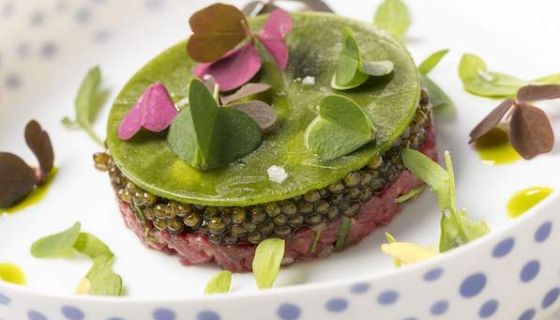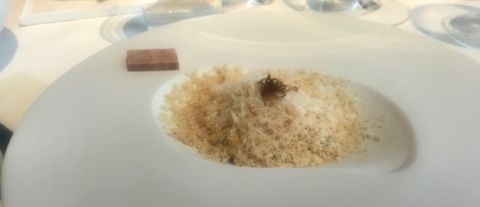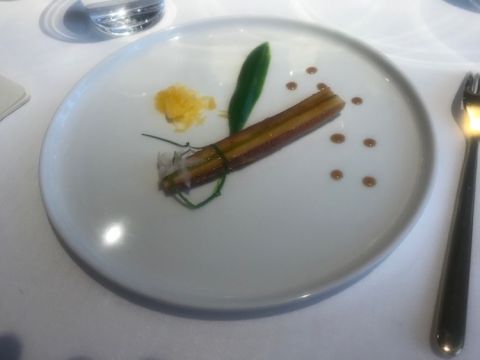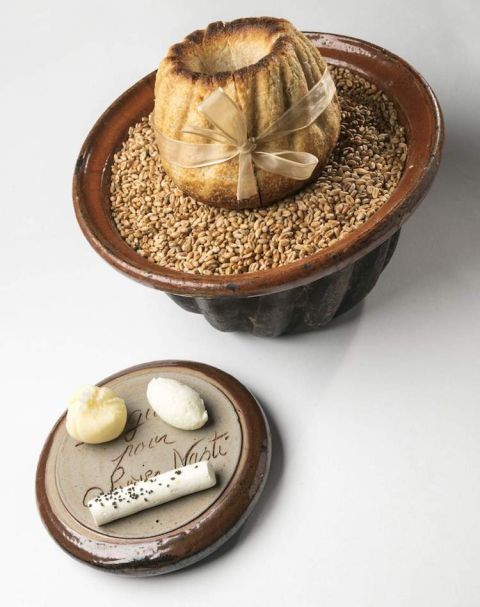To anyone who finds the current state of cooking in France either predictable or even somewhat disappointing, may I make the following suggestion?
Take a trip to Alsace on the border of eastern France and Germany, possibly the region whose citizens have for the longest period been obsessed by food and wine, and in particular visit Le Chambard in the small, predictably picturesque village of Kaysersberg in the lee of the Vosges.
The talented chef Olivier Nasti, a 2007 Meilleur Ouvrier de France, has steadily built up Le Chambard since he arrived in 2000 so that it is now a Relais & Châteaux hotel with 30 rooms (in one of which the American food commentator Anthony Bourdain notoriously and tragically met his end), spa, Winstub wine bar – and his Michelin-starred restaurant.
Not alone of course. His most important ally in this enterprise has been his wife, Patricia. She patrols with almost obsessive attention to detail the triangle that encompasses the restaurant’s front door, the entrance to the kitchen and the dining room.
And if by any chance she missed anything, it would be immediately picked up by Alexandre Walke. His official title is responsable de salle but he is far more than that. A man whom I would not like to get on the wrong side of, Walke oversees all the waiting staff and all of his customers with consummate care. But he is a man who gives the impression that his way is final. Martinets like this are integral to the successful management of such an enterprise, particularly one in which the parts are so interdependent.
The hotel provides the accommodation for those who want to enjoy dinner and an overnight stay; the restaurant provides an excuse for the kitchen to excel; while the Winstub provides the income that is essential to support the restaurant, which, given its huge labour cost and expensive ingredients, is surely only barely profitable.
Even before seeing the restaurant, customers are given a view into the busy kitchen though a large plate-glass window. This also allows Nasti to slip out whenever he sees a customer he knows, as happened in our case when he spotted our host, his neighbour (and keen food and wine matcher) Cathy Faller of Domaine Weinbach.
He is a short, intense man whose passion, other than cooking, is shooting. Hence the many antlers and hides which hang over the tables and chairs in the nearby Marius Bar as well as a life-size wooden deer by the restaurant. He rattled off the menu he proposed for our table, made a couple of necessary changes and quickly disappeared.
We began with his personal interpretation of the Alsace tarte flambée, served in a small bowl, the onion and bacon topped with cream, before a kromeski, a delicious crisp parcel of snails, parsley and garlic. There then followed two dishes of an even higher culinary specification: a frozen mass of foie gras seen above (this is Alsace after all) followed by a fillet of freshwater eel stuffed with a pike mousse alongside a leek purée, shown below.
Before what I considered to be the highlight of our meal we were served one other fantastic dish, quintessentially of the early summer season when we visited. In a white bowl came a mass of tiny sweet peeled peas on to which our waiter poured a sauce of creamy caviar while delivering on a side plate a miniature and admirably crisp tart filled with braised lettuce. This dish will have cost very little by way of ingredients but a great deal of preparation time in the kitchen.
It was after this dish and before our main course that comprised some of the biggest morel mushrooms I have ever encountered that our table was surprised by the appearance of an ingredient that had so far not played any part in our meal. It was the bread.
House-made, of course, the bread arrived in the shape of a kugelhopf, the dough-based, invariably sweet cake that again is so typical of this region. But in this case it was savoury, with the addition of hay, which provided a distinctive flavour. And yet it was not so much the bread, nor the three different butters that accompanied it, as the timing of its arrival that showed what a thoughtful and considerate chef Nasti has become.
Bread has for centuries been an indication of any restaurateur’s and any chef’s approach to hospitality, and before then of the tavern keeper. It’s a foodstuff that, while it assuages the customer’s hunger, also allows them to fill up, often too quickly, on this staple ingredient. As the quality of bread being baked in so many countries and in so many restaurants has increased substantially, attention must now turn to the timing of its service. Just handing out the bread at the beginning is no longer good enough.
These sentiments have been fully appreciated by Nasti. 'People eat too much bread at the outset of the meal at a time when they are not really paying enough attention to what they are eating. That is why I decided to move the bread service to a time during the meal, just before their main course, when their appetites have been heightened, and to make the bread almost a separate course. It certainly deserves it.'
Le Chambard 9–13 rue du Général de Gaulle, 68240, Kaysersberg, France; tel +33 (0)3 89 47 10 17

















